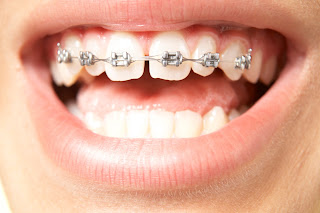Many orthodontic problems may be diagnosed and treated early to prevent further complications. The American Association of Orthodontists recommends an orthodontic evaluation at age 7. Dr. Phan recommends that children be screened for any bite or jaw growth problems between ages 7-9.
Screening does mean your child always requires orthodontic treatment. Screening allows you to recognize the severity of an orthodontic problem, if there is any. In our office, 20-25% of children benefit from early treatment. The remaining 75-80% do not require early treatment.
Early orthodontic treatment may also be referred to as Phase I treatment, interventional orthodontic treatment, interceptive orthodontic treatment, or limited orthodontic treatment. These terms indicate early correction of a bite problem.
What are examples of early bite problems?
- Severe over bite – where the lower teeth cause cuts on the upper gum
- Severe over jet – where the upper jaw and teeth stick out too far, risking enamel fracture
- Under bite issues- where the lower jaw sticks out too far
- Cross bite issues – where the upper and lower jaws misalign, leading to uneven facial growth
- Mouth breathing habit – causing dry mouth and inflamed gums
- Thumb and finger sucking habit – causing open bite
- Speech impediment – affecting language development
- Early loss of baby teeth – delayed eruption of permanent teeth
- Difficulty chewing or biting – affecting digestion and well-being
- Super crowded teeth – affecting eruption of permanent teeth
- Uneven bite – affecting facial appearance and self-image
Why do they need correction?
- In a growing child, every effort should be made to help the maxilla and mandible grow at similar speeds. Uneven jaw growth leads to an unfavorable facial profile and requires jaw surgery later in adulthood.
- By manipulating jaw dimension in a growing child, it is possible to reverse the genetic causes of this trait.
- By aligning the jaws, it is possible to achieve a more balanced and symmetrical face.
- By correcting deviated jaw growth, it is possible to reverse facial asymmetry.
- By stopping dysfunctional habits, such as finger sucking or tongue thrusting, it is possible to prevent speech, mastication, and bite problems.
- By creating space, it is possible to prevent impaction of permanent teeth.
- By correcting a malocclusion, it is possible to avoid psychological impacts caused by school bullies or child teasing.
What are the benefits of early treatment?
Early intervention eliminates harmful oral habits, creates space for ease of permanent teeth eruption, reduces the extra pain associated with surgical requirements, and reduces the risk of jaw surgery in adulthood. Early treatment plays an important role in the prevention of serious bite problems, guides jaw alignment, develops final occlusion, and improves facial aesthetics.Early detection of jaw and bite problems provides a great opportunity for effective treatment planning, financial planning, and simple treatment. When indicated, early treatment, also known as Phase I treatment, reduces the severity, treatment length and treatment cost of Phase II treatment. Many times, a more severe orthodontic problem can be corrected using a fixed or removable orthodontic appliance.
Call for a consultation.
You can schedule a consultation for your child to evaluate their bite and receive the best advice to care for your child’s smile by calling our office at (408) 971-2885. Please visit our website, www.CareOrthodontics.com, for other beneficial information.


